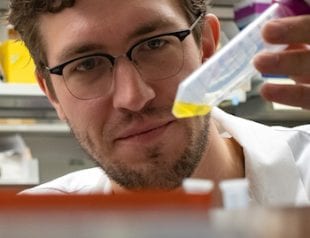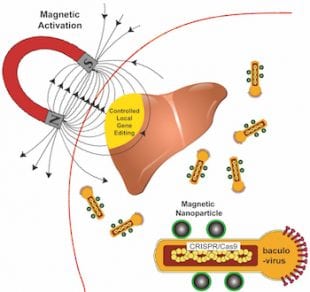Switch-in-a-cell, moths-and-magnets papers qualify for national competition

Rice graduate student Josh Atkinson is lead author of a study to develop protein switches that can be used to control the flow of electrons within cells. Photo by Jeff Fitlow
Discoveries by two Rice University research labs have been chosen to compete in STAT Madness, an annual bracket-style competition sponsored by the online medical news publication.
Mimicking the NCAA basketball tournaments, the competition pits 64 biomedical research teams from United States institutions against each other in head-to-head competition to determine the most groundbreaking peer-reviewed research of the past year.
The Rice teams led by synthetic biologist Joff Silberg and bioengineer Gang Bao will join the other teams in Round 1, which kicks off at 12:01 a.m. on March 4.
Readers are encouraged to vote for teams they want to advance at https://www.statnews.com/feature/stat-madness/bracket.

Rice bioengineers used a magnetic field to activate nanoparticle-attached baculoviruses in a tissue. The viruses, which normally infect alfalfa looper moths, are modified to deliver gene-editing DNA code only to cells that are targeted with magnetic field-induced local transduction.
Silberg and his team, as reported in Rice News last November, developed protein switches that can be used to switch the flow of electrons “on” and “off” within cells. The synthetic proteins are one of the few remaining components needed to mimic entire electronic devices within cells.
Bao and his lab, in a paper covered by Rice News last December, combined a virus that infects moths with magnetic nanoparticles to create a potential new therapy for inherited genetic diseases like muscular dystrophy, sickle cell, cystic fibrosis, spinal muscular atrophy and some forms of cancer.
Rice is one of several institutions with more than one entry, though the details won’t become apparent until the brackets are posted by STAT.
Two winners — a popular choice based on voting and an editor’s pick based on the originality, rigor and potential impact of the work — will be revealed at the end of the six-round competition, on April 8.

